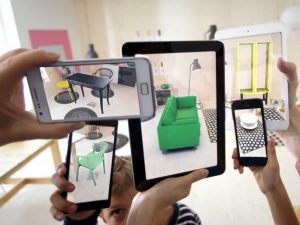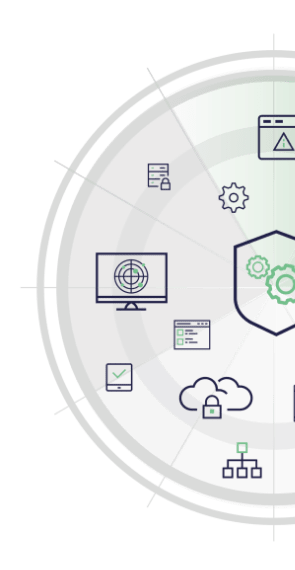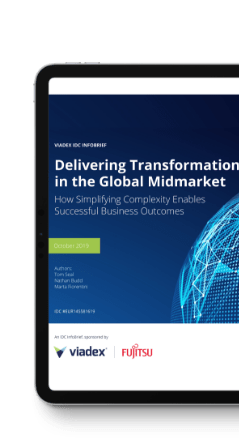Top ten tech trends for 2018
Part one: 1-5
It’s time to stop predicting the future, we’re in it[1].
Thirty-five years ago, Ford launched its new Sierra with the inspirational claim that it represented “Man and Machine in Perfect Harmony”. For sure it was probably a comfy car, and must have been a decent drive given that it was ‘honed by the wind’.
Harmony must have meant something different back in those ideal days of brand new cars for £4783, when ‘artificial’ meant not much more than fake sugar. This is when computers were no-nonsense big solid chunks of metal you could give a hefty kick to if they malfunctioned, and a cloud brought nothing but rain.
Today’s pace of technology is warp-speed. Capabilities mutate and evolve faster than companies can adapt and implement them. Our personal and business lives are changing by the week. I’m going to look at what I believe are the ten most pressing technologies the enterprise should have on its radar; from the perspective that in any sector these are the same technologies your competition will be evaluating.
‘Ten’ is relatively arbitrary; there are hundreds, but there’s only so much a CIO can get around to during a working day. I’m only human, after all. Fortunately, that’s no longer as much a limitation as it used to be. So, let’s have a quick romp around harmony, artificiality, and the way we define things now…
- Artificial Intelligence and Machine Learning
Machine Learning (ML) and Artificial Intelligence (AI) have long been the domains of life sciences and research organisations. From the early days of online contextual advertising however (‘you bought this, so you’ll love this’) both technologies have presented enormous opportunities in the commercial world. We first saw it in 2001 – the movie, not the year – with the memorable dialogue between Dave and the too big for his own boots HAL: “Open the POD bay doors, HAL”.

The near human-like decision capabilities, made possible through voice and image recognition, have come into the home with Alexa, paving the way for consumer acceptability of the appearance of such interactions in everyday transactional relationships. Uses are becoming apparent in travel and retailing predictions, through to healthcare for genomics and disease detection.
Organisations will be looking for ways to apply ML/AI to their business, in initiatives designed to improve the customer experience and reduce costs. By the end of 2018 the idea of interacting with non-human agents will create new relationships, deliver on new expectations, and pave the way for associated innovations.
Given that this is reality, not fantasy, I can confidently state that the intelligences delivering our services will not throw their own opinions into the mix: “Your bum is too big in that madam”. HAL, you may recall, was none too keen to open the POD bay doors.
- Software Will Define Everything
That chunk of metal I was talking about giving a hefty kick to, otherwise known as hardware, is slowly but surely making its way to the history books. Software is changing how we use technologies in a far leaner fashion, a virtual approach. This huge shift in emphasis from the physical to the virtual is enabling businesses to become faster, more flexible and more scalable.
The need for organisations to spend time and money on infrastructure and networking is being handed over to Service Providers who are delivering computing capabilities almost as if they were utilities companies. Software Defined Everything (SDx) technologies are becoming the key to business growth.
Micro-Services and serverless event-driven technologies including Containers and Lambda
run responsive code and automatically manage the compute resources that the code dictates. They are autonomous systems and agents which will be increasingly integrated with ML/AI) to automate everything.
If ‘everything’ sounds like an overclaim, consider that these are technologies that don’t simply make it easier to transact or communicate, but make it easier to live. Smart agents or machines improve lifestyles, though Smart Cities initiatives where the Internet of Things drives efficient transport systems, self-regulating environmental controls, and predictive maintenance to keep everything in tip-top running order.
Smart factories and self-driving vehicles (cars, trucks, buses and trains) are here, now. Manufacturing is becoming slicker, faster, less costly, and more reliable.
- The Internet and Information of Everything
There is nothing we need now not know about how to improve, empower and enable better lives. On the Internet of Everything, nearly every device that uses power becomes IP-enabled and connected to the Internet.
Developments such as smart clothing are now also being finessed. The data that these devices/items create -at the edge, running on systems contained on a chip (CPU, Memory, Disk smaller than credit card – Raspberry Pi on steroids) is processed and transformed to Information of Everything through Big Data and Analytics.
Better customer insights abound, everywhere on everything. How does that impact the enterprise? Real-time decision making is being democratised. No longer do meetings need to be convened, research commissioned, heads scratched as new ideas are sought. The enterprise is now globally responsive across its digital workforce.
More and more workers in the enterprise are empowered and have access to core systems, applications, and data, as well as to each other even when they are in different locations. If something needs doing it can now get done. If an opportunity arises it can now be quickly exploited.
- Seeing is believing: Virtual and Augmented Reality)
The Immersive Experience leverages virtual and augmented reality to provide improved user experiences in the home. Its applications in retailing and manufacturing are enormous. On the factory floor, for example, an operative can see what is happening within a manufacturing process, virtually, and adjust conditions to suit.
VR and SR are also poised to become game-changing business tools. Companies can present living ideas and plans to customers. In construction, for example, entire buildings can be visited through virtual models, allowing customers to interact and collaborate with designers and specifiers.
These technologies take personalisation to the next level, where a previously general one size fits all experience is now becoming tailored to the customer of one – you – while you engage with the service, regardless of what it might be.

- Perfect harmony: Assistive/Bio – Technology
And my final one to watch, before moving onto the next five in my next blog, brings me back where I started, the notion of man and machine in perfect harmony. How more infinitesimally spliced together can the two be than integrating technology with human biology not just for better lifestyles, but for better lives?
Augmented technology with our biology will become more accessible. We have already seen major gains for the disabled with technologies like Cochlear hearing implants for the hearing impaired, screen readers and mobile apps for vision impaired and advanced prosthesis for limb impaired individuals. Expect that these technologies will increase and become more widely spread in their applications and usage for the public at large – smart watches and clothing are only the beginning.
[1] Kind thanks to Captain Barbossa for the gem of the idea




